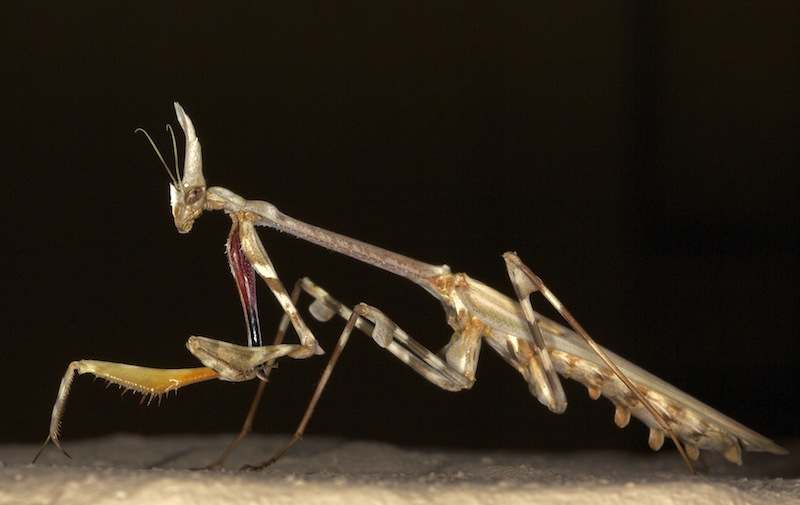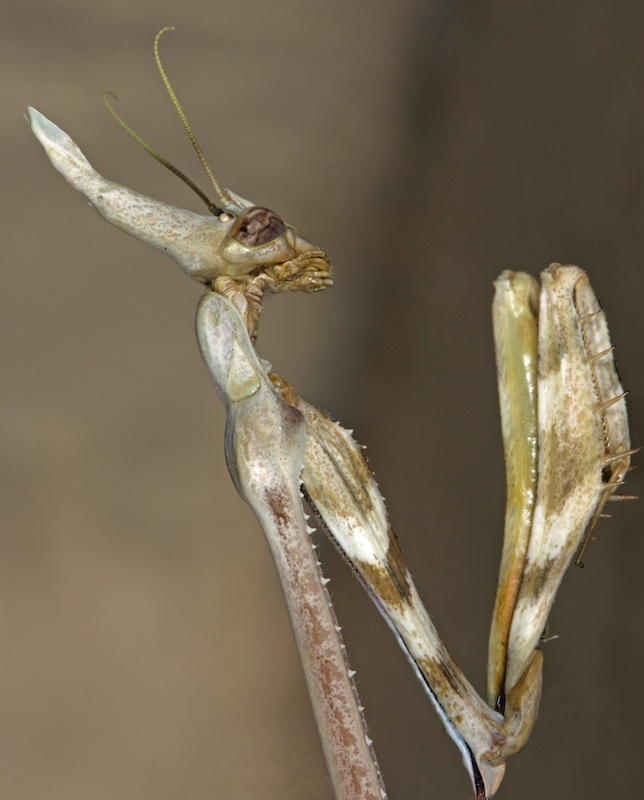Bark Mantid Antistia sp. possibly
Antistia vicina
Superfamily Eremmiaphiloidea. Family Eremiaphilidae. Family Tarachodidae. Subfamily Tarachodinae. Tribe Tarachodini. Subtribe Antistiina
There are 4 similar looking
Antistia species found in South Africa.
Antistia parva and
Antistia vicina are recorded from the Northern Cape.
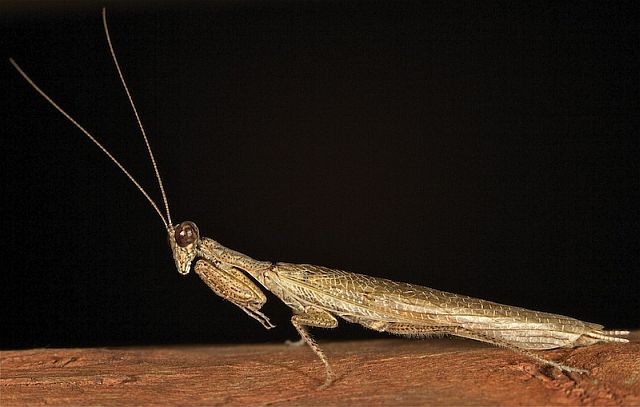
When the raptorial leg is folded at rest or prior to striking, the ventral surfaces of tibia and femur adjoin and their spines interlock.

Attracted to the outdoor light at KTC in Kgalagadi Transfrontier Park in Nov. 2013
Description
Head large, almost twice as broad as the supracoxial dilation. Eyes large and protruding.
Frontal scutellum 1.7 to 1.9 times as long as it is high, with a slightly arched superior margin.
Pronotum with supracoxal dilation, 2 to 2.2 times as wide as long, metazone 1.7 to 1.8 the size of the prozone.
Forelegs slender, femora ochre with black speckling externally, armed with 4 external spines, the first two being closer together, tibia armed with 9-10 external spines. Median and hind legs covered in long, sparse hairs.
Wings greatly protruding over the abdomen apex. Fore wings (= tegmen or elytra) 4.2 to 4.4 the length of the pronotum, translucent with dark brown veins and without a small dark preapical band in the dicoidal area. Hind wings hyaline without dark preapical band.
Size: body length 22 to 24 mm; pronotum length 4.2 to 4.3 mm, 2 to 2.1 mm wide; elytra length 18.2 - 18.5 mm.
Differential diagnosis:
A. vicina can be told from the other species in the genus by the lack of dark patches (dark preapical band) on the the elytra and hind wings.
A. maculipennis-like dark wing markings can also occur in
A. vicina, but are less pronounced and paler if present.
Distribution
South Africa (Northern Cape) and Namibia.

Their head is triangular and extraordinarily mobile with large compound eyes set very high on the upper corners and three simple eyes called ocelli on top of the head (between the compound eyes).
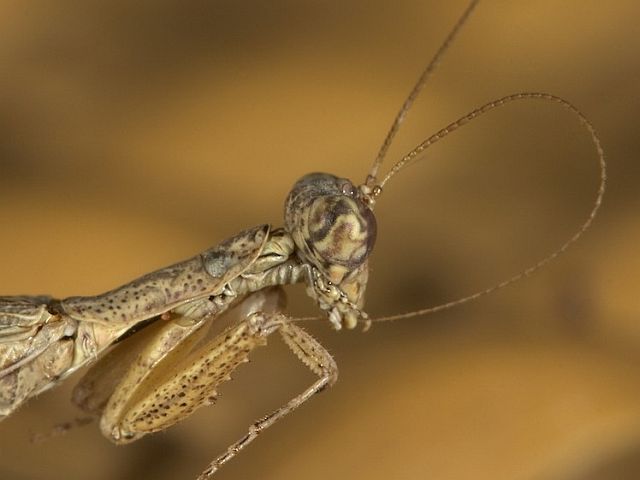
Most mantids sit quietly and wait for prey to come within reach, but a few species actually chase down their victims. After feeding, they always spend a great deal of time grooming. They use their forelegs to wipe their eyes, heads, and antennae.
Links:
http://mantodea.speciesfile.org/Common/ ... ID=1185188
https://www.zobodat.at/pdf/ANNA_100B_0019-0059.pdf






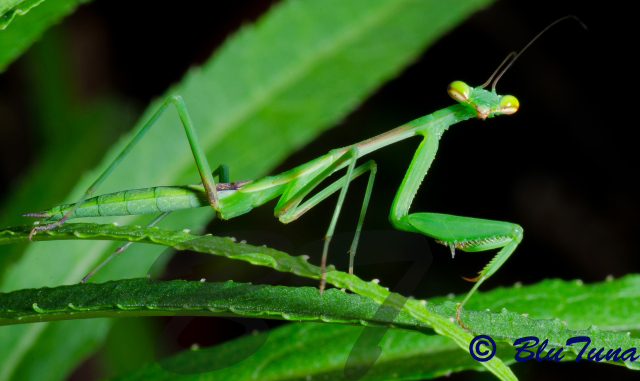 Nymph © BluTuna
Nymph © BluTuna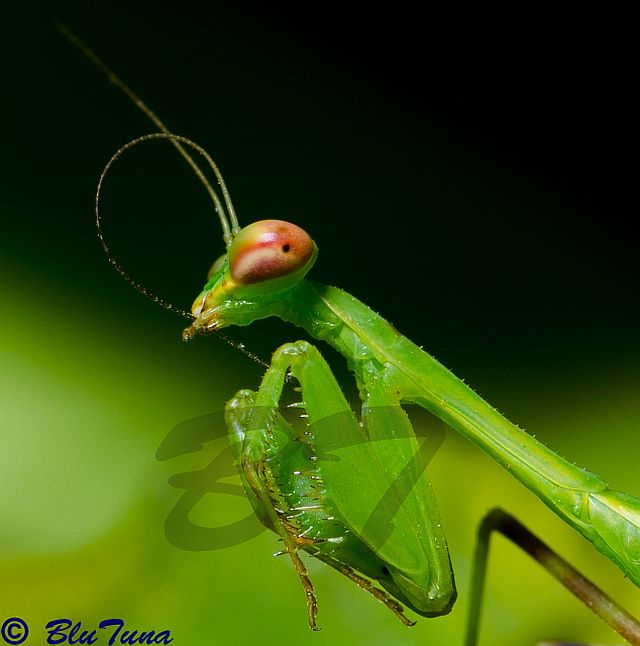 Nymph © BluTuna
Nymph © BluTuna Nymph © BluTuna
Nymph © BluTuna © BluTuna
© BluTuna © BluTuna
© BluTuna © BluTuna
© BluTuna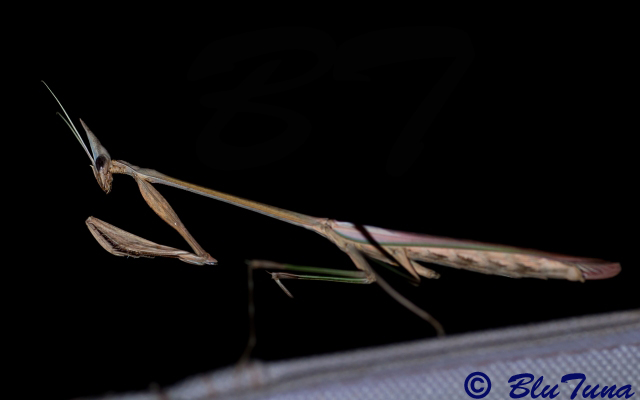 © BluTuna
© BluTuna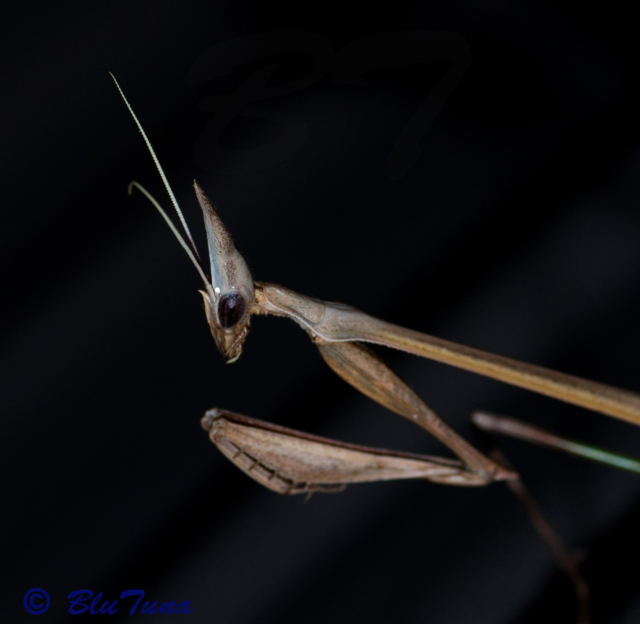 © BluTuna
© BluTuna




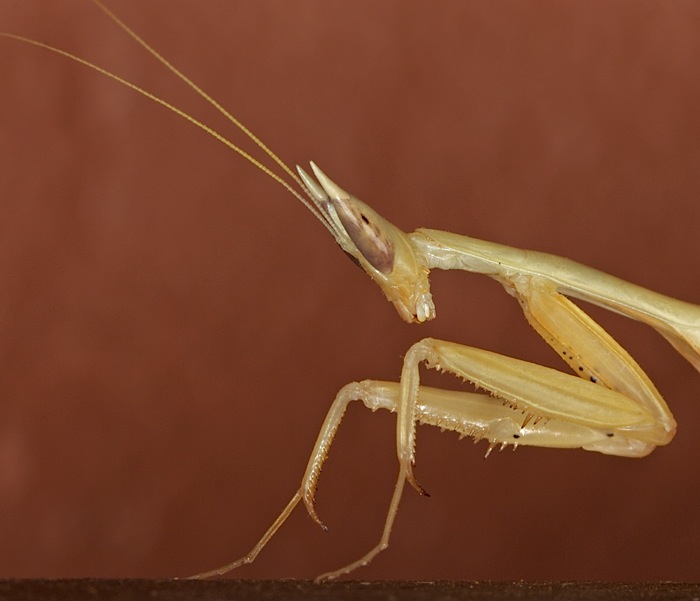

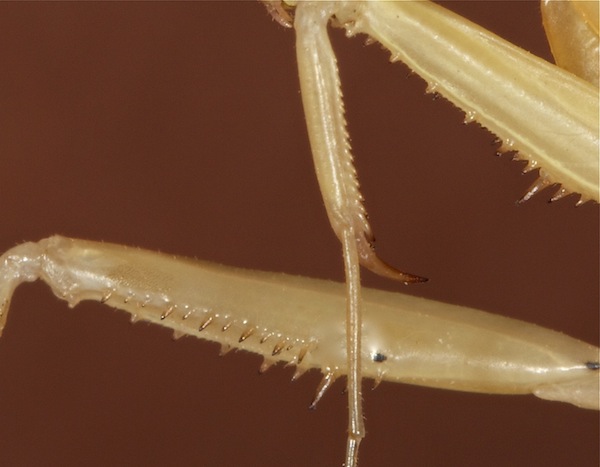


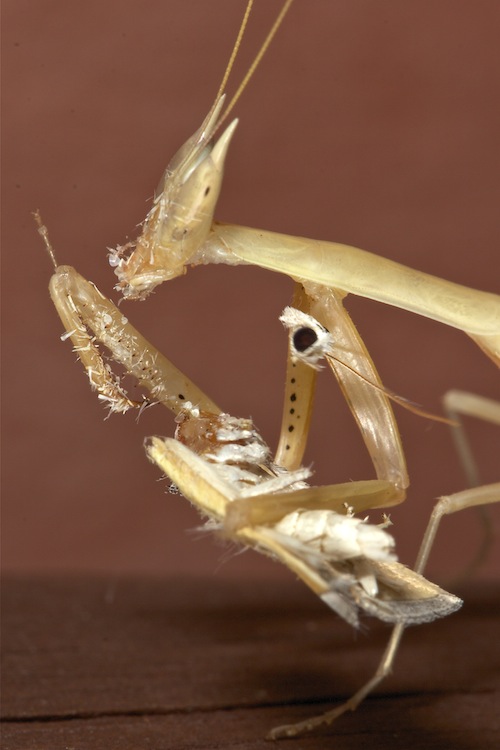

 © BluTuna
© BluTuna © BluTuna
© BluTuna © BluTuna
© BluTuna © ExFmem
© ExFmem © ExFmem
© ExFmem